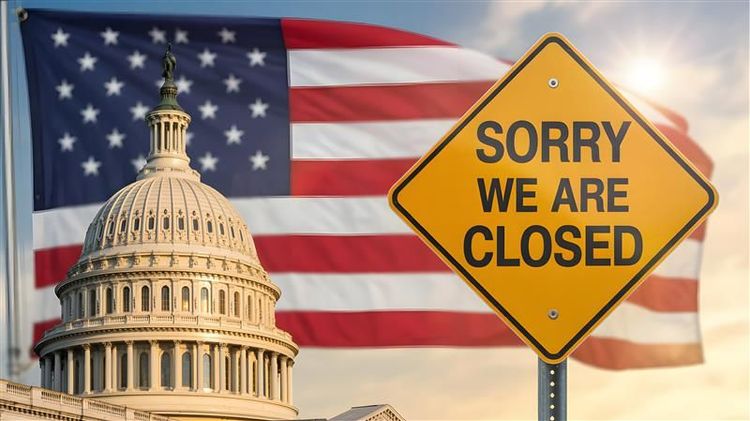Once again, the United States is on the brink of a government shutdown that could disrupt parts of public life starting October 1. Amid a deadlocked fiscal policy, partisan infighting in Congress threatens to bring government operations to a halt. Without an agreement, the closure of numerous federal agencies looms, forcing hundreds of thousands of government employees into furlough and creating uncertainty in the financial markets.
A look back in history
Government shutdowns first occurred in the late 1970s and became more frequent during periods of political or financial deadlock. Since 1976, the US has experienced a total of 21 shutdowns, ranging from just one day to a record 35 days at the end of 2018 and beginning of 2019, which was triggered by disputes over funding for a border wall with Mexico during Donald Trump’s first term. Shutdowns most often happen at the end of the fiscal year on September 30, when Congress fails to pass budget legislation or the President does not sign it into law. The triggers are typically disagreements over budget priorities and political issues. The consequences: blocked administrative services, furloughs for federal employees, and temporary turbulence in the financial markets – which, however, has typically reversed relatively quickly.
Typical impacts
Previous shutdowns have primarily resulted in temporary effects: delays in passport and loan processing, closure of national parks, and suspension of regulatory work. The 2018/19 shutdown cost the US economy several billion dollars, but there were no lasting effects since employees returned to work and government operations resumed quickly.
Unique risks in 2025
However, the potential shutdown in 2025 could mark an entirely new dimension. President Trump’s administration has instructed federal agencies to prepare not only the usual contingency plans for temporary furloughs, but also formal concepts for permanent staff reductions. According to a memorandum from the Office of Management and Budget (OMB), programs that are not legally mandated or do not align with the President’s priorities are to be eliminated—with permanent job cuts, even if funding is later restored. This signals a break from past practice: so far, nearly all furloughed employees have returned to their jobs after a shutdown. According to US media reports, the OMB has even instructed agencies to prepare termination notices for "essential" employees. This could result in a significant loss of government personnel and institutional knowledge.
Impact on financial markets
Historically, markets have viewed shutdowns as short-term disruptions. While delayed economic data or complicated monetary policy decisions have created uncertainty, recoveries have generally been swift. The potential impact of the current, threatened shutdown will depend largely on its duration. Short-term shutdowns typically have only limited effects on the economy and financial markets, whereas prolonged shutdowns significantly increase the risks for government services, federal employees, and economic growth. Looking back: in the last two shutdowns – the 16-day closure in 2013 and the 35-day closure in 2018/19 – the financial market effects were manageable. Notably, during the long 2018 shutdown, the S&P 500 Index actually gained about 10%, supported by overall positive market conditions.
This underscores that the impact of a shutdown on financial markets depends more on the broader economic environment and sentiment at the time of the crisis than on the shutdown itself. Factors such as Federal Reserve monetary policy, inflation, geopolitical developments, or corporate earnings can exacerbate or offset the temporary effects of a government funding lapse.
Nevertheless, an extended shutdown poses significant risks: hundreds of thousands of federal employees could be furloughed, approval processes delayed, loan programs suspended, and economic output reduced. According to Congressional Budget Office analysis, the 2018/19 shutdown cost the US economy about USD 11 billion in GDP. Most of that loss was later recovered, but a portion was permanent. Relative to the total US economic output, however, this effect can be considered minor.
While US shutdowns are disruptive for government operations and employees, financial markets tend to be remarkably resilient. Short-term volatility is common, but lasting damage is rare. Investors should therefore avoid making hasty decisions out of fear.


